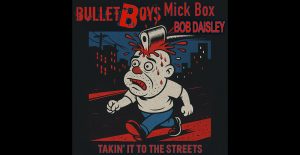The Unsung Chapter: Deep Purple Mark IV and the Bolin Era

Tommy Bolin and The Shifting Sands of Deep Purple
In the ever-evolving landscape of hard rock, few bands have weathered as many transformations as Deep Purple.
From the psych-tinged beginnings of Mark I to the iconic Mark II lineup that defined early heavy metal, and the funk-driven stylings of Mark III, the band has always been in motion.
But in 1975, Deep Purple faced its most uncertain moment yet.
With the departure of founding guitarist Ritchie Blackmore, many assumed the band’s days were numbered. Blackmore’s virtuosity had been central to their sound, and his exit left a void not easily filled.
Buy Come Taste the Band on Amazon*
Yet rather than retreat, the band pivoted—bringing in a bold new presence in American guitarist Tommy Bolin.
The result was a completely new chapter: Mark IV.
Often overlooked or dismissed, this era produced the Come Taste the Band album—one of Deep Purple’s most musically adventurous and emotionally charged efforts.
With Bolin joining Ian Paice, Jon Lord, Glenn Hughes, and David Coverdale, the band embraced groove, soul, and experimentation in ways it never had before.
The Genesis of Mark IV: A New Direction – When Blackmore Walked Away
By 1975, creative tensions were mounting within Deep Purple.
Ritchie Blackmore had grown weary of the band’s evolving style, particularly the increasing presence of funk and soul influences encouraged by vocalist/bassist Glenn Hughes.
Following the release of Stormbringer, he made his departure official and turned his attention to Rainbow.
The remaining members were left with a decision: fold or forge ahead.
Enter Tommy Bolin
The band chose reinvention.
Their search for a new guitarist led them to Tommy Bolin—a gifted and charismatic musician known for his boundary-pushing style.
A Midwestern native with roots in jazz fusion, hard rock, and psychedelic funk, Bolin was as versatile as he was distinctive.
His résumé included stints with Zephyr, jazz drummer Billy Cobham (on the Spectrum album), and a notable tenure with the James Gang, where his playing helped evolve the band’s sound on Bang (1973) and Miami (1974).
Bolin’s musicality stood apart from anything Deep Purple had seen before. He brought a fluidity and melodic intuition that promised to take the band somewhere new—and that’s exactly what happened.
Tommy Bolin: Beyond Deep Purple – A Guitarist With Range
Long before joining Deep Purple, Tommy Bolin had carved a niche for himself as an explorer of sound.
His blend of jazz-influenced improvisation and heavy rock rhythm made him a sought-after collaborator. As a solo artist, Bolin began work on his debut album Teaser while also preparing for Purple’s next chapter.
The Tommy Bolin Teaser Sessions
Released in 1975, Teaser is widely considered a masterpiece of genre fusion.
Tracks like “The Grind” and “Savannah Woman” veer between rock, Latin, soul, and funk—each anchored by Bolin’s emotionally rich guitar playing.
The title track, “Teaser,” exemplifies his signature style: slippery, expressive, and unbound by convention.
Teaser boasted an impressive guest roster, including Jan Hammer and Jeff Porcaro, further highlighting Bolin’s growing reputation.
The album’s diversity showed a musician with far-reaching curiosity and deep compositional skill.
Tommy Bolin and Deep Purple Mark IV: Come Taste the Band
In mid-1975, Deep Purple entered Musicland Studios in Munich to begin recording Come Taste the Band.
The sessions, produced by Martin Birch, marked a bold departure from the heavy blues-rock template that had long defined the band.
With Bolin now fully integrated, the album leaned into new grooves—blending rock with funk, soul, and even jazz-influenced structures.
Yet the results still felt unmistakably Purple, thanks in large part to the foundational presence of Paice and Lord.
The opening track, “Comin’ Home,” is an adrenaline burst that reintroduces the band with fresh energy.
“Gettin’ Tighter,” written by Hughes and Bolin, is a funky, infectious highlight that showcases the duo’s musical chemistry.
And “Owed to ‘G’” offers a lush, almost cinematic soundscape—a reminder of Bolin’s jazz-fusion sensibilities.
The Tommy Bolin Effect
Rather than mimic Blackmore’s classical flair, Bolin injected warmth, color, and personality into his playing.
He was less concerned with virtuosity than with feel, often blending his guitar lines seamlessly into the rhythm section or harmonizing with Hughes and Coverdale vocally.
The band had evolved into something else—something more elastic, more groove-driven, and undeniably modern.
The Live Experience and Growing Strains
Touring Come Taste the Band was allegedly demanding.
Deep Purple remained one of the biggest live acts in the world, and expectations were high. Some audiences were immediately drawn to the new sound.
Others, loyal to the Blackmore era, were more hesitant.
Still, the Mark IV lineup delivered powerful performances—particularly during their European and Japanese runs.
One of the clearest examples of their raw chemistry on stage is the live version of “Comin’ Home,” available here on YouTube.
Bolin’s playing is confident and sharp, his stage presence magnetic.
Yet behind the scenes, the band faced mounting pressure—from both the demands of the road and the toll of constant reinvention.
The chemistry that had once fueled innovation began to fray, and Deep Purple quietly disbanded in mid-1976.
Tommy Bolin Legacy: Misunderstood in Its Time
For many years, Come Taste the Band was viewed as an outlier—a sonic detour dismissed by purists. But in recent decades, a more nuanced appreciation has emerged.
The remixed edition brought new clarity to the original recordings, allowing fans to better appreciate the album’s production and arrangement details.
Critics, too, began to re-evaluate Bolin’s contributions—not just as a fill-in for Blackmore, but as a true co-creator of a unique and vibrant Deep Purple sound.
Tommy Bolin: A Legacy in Bloom
Although Mark IV’s lifespan was brief, its artistic footprint has grown.
Musicians ranging from Joe Bonamassa to John Frusciante have praised Bolin’s work, citing his emotional playing and unorthodox techniques as an influence.
His solo catalog, particularly Teaser and the posthumously released Private Eyes, continues to be rediscovered by new generations of guitarists and listeners alike.
Tommy Bolin and Deep Purple: Final Thoughts and Takeaways
The Mark IV era of Deep Purple didn’t aim to replicate the past—it set out to create something new. In doing so, it opened a creative door that was sadly closed too soon.
Tommy Bolin brought not only technical ability, but vision, soul, and spontaneity to a band in flux.
Come Taste the Band stands as a bold reinvention: risky, inspired, and far ahead of its time.
While Mark IV may not be the most celebrated chapter in Deep Purple’s storied history, it remains one of its most intriguing and musically rich.
For fans of rock fusion, guitar innovation, or simply great songwriting, this chapter is essential listening.
*Disclaimer: This blog post contains affiliate links. If you click on one of these links and make a purchase, I may earn a small commission at no additional cost to you. As an Amazon Associate, I earn from qualifying purchases. Thank you for your support.




